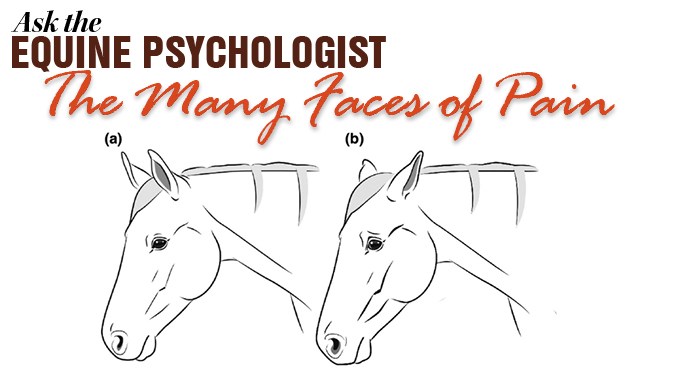When my horse is a “little off” is he just being a wimp? Some horses seem to keep on going with a whole lot of issues that would bring my horse to his knees. How can I tell if he’s really hurting?
A: There may be some evolutionary rationale for why a horse might try to suppress signs of pain. Since exhibiting their vulnerability would make them easy targets for predators, a strategy to mask their pain may have evolved. However, this explanation does not account for the individual variability we see in horses’ behavioural indicators of pain. It may be that horses, like humans, feel pain differently. The so-called “wimp” may simply have greater pain sensitivity; it hurts him more than it does his “stoic” stablemate.
Determining how much pain our horses are suffering is challenging even for professionals. Lameness, which would appear to be the most obvious indicator of pain severity, is often not the most accurate assessment of the extent of injury. In a study where seasoned equine practitioners assessed the degree of lameness in a sample of horses with varying issues, and then assessed actual tissue damage in the same (but unidentified) horses’ ultrasounds and radiographs, there was no relationship between the horses’ observed lameness score and actual tissue damage.
Lameness may also vary across situations. Many of us are familiar with the phenomenon where our horse is lame at home, but looks perfectly sound at the clinic. Similarly, horses who are lame upon setting out on the trail, but have a miraculous recovery when turned back towards home have been accused of “faking” their lameness. However, when the physiological source of the lameness has been discovered and treated, the “faking” behaviour disappears, suggesting that horses probably do not hatch devious plans about how to call in sick for work. The more likely explanation for the sound horse at the clinic and the one heading home is that the extra adrenaline boost associated with both of these events is sufficient to temporarily override the protective function of favouring an injury.
In the end, it is probably not helpful to think of our horses as wimpy or stoic. Horses, like humans, feel pain differently, and don’t have very many ways of telling us where it hurts. In general, we are not that skilled at picking up some of these more subtle indicators of pain. So when we do see them, we need to believe that our horses’ pain is legitimate, and it may take some concentrated sleuthing to get to the source.

